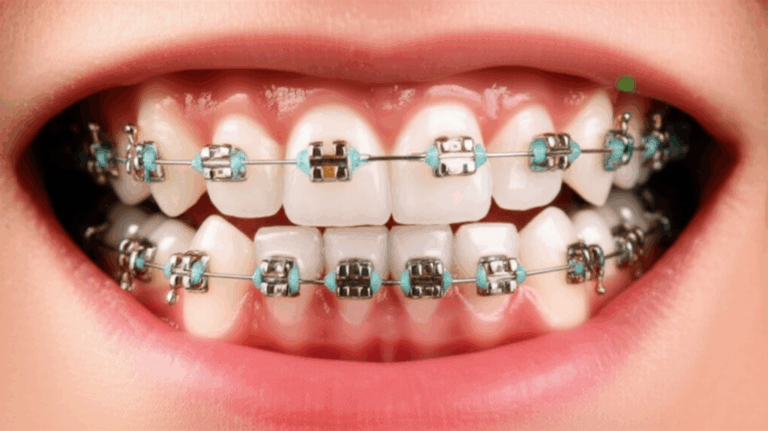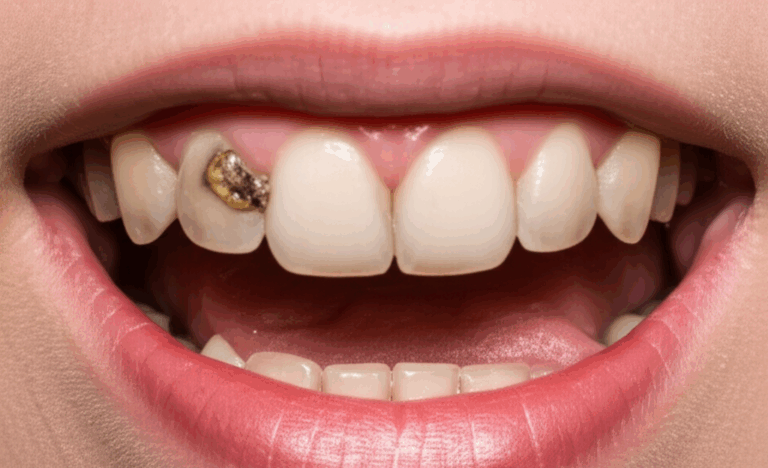
How Long Does a Dental Implant Take? A Comprehensive Timeline Guide
Getting ready for a new smile with dental implants is exciting but sometimes confusing. How long does it really take from your first appointment to getting your final new tooth? In this easy-to-understand guide, I’ll break down the whole process, explain each step, and share real examples. You’ll see why this article is worth your time if you’re planning for dental implant surgery or just curious about the timeline.
Table of Contents
What is a Dental Implant and Why Get One?
Let me give you a quick picture. Think about losing a tooth. Chewing feels strange. Your smile changes. That’s where a dental implant helps. A dental implant is a small post made from titanium or sometimes zirconia. Your dentist puts this post into the jawbone where your missing tooth was. Later, your dentist adds a special piece, called an abutment, and then tops it off with a brand new dental crown. Your smile looks and feels like before—maybe even better!
People get implants because they last a long time, help with eating and talking, and look real. They’re even okay for kids and older adults if the bone is healthy.
How Long Does the Whole Dental Implant Process Take?
You probably want a straight answer. Usually, a dental implant takes around 4 to 9 months from the first visit until you get your new tooth. But if you need extra stuff like bone grafting or a sinus lift, it can take up to a year.
Here’s a quick table for the usual timeline:
| Stage | Time Needed |
|---|---|
| Consultation & Planning | 1-3 weeks |
| Bone/Sinus Grafting (if needed) | 3-12 months |
| Surgery for Implant | 1-2 hours |
| Osseointegration (Healing) | 3-6 months |
| Abutment & Crown Placement | 1-4 weeks |
| Total (No Graft) | 4-9 months |
| Total (With Graft) | Up to 12+ months |
Don’t worry! Not everyone needs extra steps, and some people heal fast.
What Are the Main Stages of Getting a Dental Implant?
Think of getting a dental implant like building a house. First, you need a plan. Next, you lay the base. Then, you put up the house. Last, you add the finishing touches.
Here are the main parts:
- Initial Consultation and Planning:
Tests, X-rays, and choosing the right treatment with your dentist team.
- Extra Procedures (If Needed):
Healing from bone grafting, sinus lifts, or ridge work to get the jaw ready.
- Surgery for the Implant:
The dentist puts the implant post into your jaw.
- Osseointegration:
Letting the bone grow onto the implant to make it strong.
- Abutment and Final Crown:
Adding a connector and then your new tooth on top.
Not hard, right? But each step takes time, and here’s why.
What Happens During the Consultation and Planning Stage?
I still remember my first dental implant visit. Nervous? Of course. But the dental team made me feel better. Here’s what to expect:
- Full Exam: Your dentist takes X-rays or a quick CT scan to look at your teeth and jaw. It’s easy and doesn’t hurt.
- Custom Plan: They’ll ask about your medical past—like if you have diabetes, smoke, or take medicine.
- Talk About Costs and Time: You’ll learn what to expect, including how long it’ll take and how much it might cost.
Usually, this takes only one or two visits over a couple weeks.
Do I Need Bone Grafts, Sinus Lifts, or Other Extra Steps?
Here’s a big question: Is my jawbone strong enough for the implant? For some, after the oral surgeon or periodontist checks the bone, they find out more bone is needed.
Let’s break down the extra steps:
These steps add more time, but they’re really important for success.
How Does the Dental Implant Surgery Work?
The day of surgery isn’t scary—promise! I was scared, too, but here’s what usually happens:
- Simple Process: Using local numbing or sometimes sedation, the surgeon makes a small cut in the gum, drills a spot in the jaw, then puts in the metal post. For one implant, this is about one hour.
- Quick Recovery: Most people feel normal after a day or two. You might get some swelling or bruises, but a bit of pain medicine and some rest help a lot.
- Stitches: These often go away on their own, but your dentist might remove them at the next visit.
You’ll leave with either a gap, a temporary denture, or sometimes a short-term crown just for looks and comfort.
What is Osseointegration and Why Does It Take So Long?
Now comes the waiting. After your implant is in, your bone needs to grow around the implant so it’s super strong. This is called osseointegration.
- Why Does This Matter? The better the bond between your bone and the implant, the longer your new tooth will last—sometimes your whole life!
- How Long Does It Take? For most people, it takes about 3 to 6 months. During this time, no hard chewing, and eat soft foods. Patience here is the real trick. Rushing can make the implant fail.
- Healing Tips: Keep your mouth clean, don’t smoke, and follow your dentist’s advice every day.
When Do I Get My Abutment and Crown?
After your implant is solidly healed, your dentist moves to the last steps.
- Abutment Placement: Sometimes, the abutment goes in with the implant. Other times, it’s a fast, minor surgery after healing. If done later, allow it a week or two to heal.
- Impressions: Your dentist will take old school or digital molds to shape your new tooth.
- Crown Making: The crown is made just for you, sometimes in a dental ceramics lab or a zirconia lab for more toughness and looks.
- Final Step: You’ll come back to try out and attach your new crown. Sometimes tiny touch-ups are needed, but nothing beats seeing that final smile.
What Factors Can Change How Long It Takes?
Really, no two implant stories are the same. Here’s what can make it faster or slower:
- Your Health: Healing is easier if you’re healthy, with good bone, and take care of your teeth. Things like uncontrolled diabetes or weak bones can slow things down.
- Smoking: If you smoke, try quitting. It can slow healing and raise the chance of infection or even implant failure.
- How Many Implants: More implants usually mean longer healing. If you’re getting a whole set of teeth, expect more steps than just one single tooth implant.
- Type of Implant: New options, like immediate load implants, exist for some people, which can make things go quicker. But not everyone can get them.
- Dental Team: The experience and tools of the digital dental lab and dental surgeons matter. Good teams can make things go smoother and with fewer problems.
- Problems: Rarely, you might get infection, swelling, or slow bone healing. Most problems get solved with some care or antibiotics.
Can I Get Teeth Faster With Immediate Load Implants?
Waiting months might not sound great. Sometimes, people ask about “teeth in a day” or immediate load implants.
- What Are They? In these, the dentist puts a short-term crown or bridge the same day as your implant surgery.
- Who Can Get Them? Not everyone. You need really good bone strength, no infection, and good health.
- Good and Bad: Quicker results and a nice smile fast. But the risk of the implant not bonding well is a bit higher than slow-and-steady ways.
If you’re interested, ask your dentist at the first visit. Sometimes, an implant dental lab can help make a plan for faster and good-looking results.
How Can I Heal Faster and Make My Implant Last?
Here’s the best tip: be a great patient! Here’s what I’ve learned from dentists and stories from others.
- Follow Directions: Your dentist will give you easy steps for keeping your mouth clean (like gentle brushing and using a special rinse).
- Eat Good Foods: After the surgery, stick with soft foods (like eggs, mashed potatoes, and yogurt). Don’t bite on hard, chewy candy or ice.
- Go to Check-Ups: Don’t skip appointments. Small problems, like loose stitches or swelling, can be fixed fast when you catch them early.
- Stay Healthy: Eat well, don’t smoke, and keep other health problems under control.
Some people heal quickly and start chewing in a few weeks. Others need more time. The secret? Listen to your care team and you’ll be smiling soon.
Is the Wait for Dental Implants Worth It?
Let’s be honest. Waiting for your dental implant to heal feels like waiting for paint to dry. But when you see the finished result—a new front tooth, a whole new bite, or a real-looking molar—it’s awesome.
- Long-Lasting: Dental implants are made to last. Lots of people have theirs for 30 years or even longer!
- Feels Real: You can eat, talk, and laugh like always.
- Keeps Your Jaw Strong: Implants stop your jaw from shrinking and keep your face looking young.
- Confidence: You’ll love seeing your new tooth in photos or in the mirror.
Not sure? Talk to a dental implant specialist about your choices and how to make your timeline work for you.
Summary and Key Takeaways
Remember these things if you want a dental implant:
- Dental implants take about 4 to 9 months for most people, but up to 12 months if you need bone work.
- There are a few steps: first visit, possible bone work, surgery, healing (osseointegration), then abutment and crown.
- Healing and how long it all takes depends on your health, bone, cleaning habits, and sometimes your lifestyle.
- Immediate load implants (teeth in a day) happen for some people but not everyone. Ask your dentist early.
- Taking care of your mouth before and after surgery helps a lot.
- Implants look, feel, and work like real teeth.
- Having a good dental team—including the right digital dental lab, ceramics lab, or implant lab—helps the whole thing go well.
- The waiting is worth it for a strong, good looking smile and better teeth health.
Need more info?
Explore more about teeth information or check how a top china dental lab supports perfect smiles worldwide.
Frequently Asked Questions
How much does a dental implant cost?
It depends on your area, your dentist, and if you need extra steps. Ask for a price list at the start.
Is the procedure painful?
Most people say the surgery feels a bit like having a tooth pulled—not fun, but not scary. Any pain or swelling gets better quickly.
How soon can I eat regular foods?
Stick with soft foods until your dentist says it’s safe to chew as usual—usually after the final crown.
Do dental implants last forever?
With good care and regular check-ups, they can last for many years or more!
Remember: Planning and patience are very important with dental implants. Talk to your dentist, trust the steps, and get ready to enjoy your new smile!








